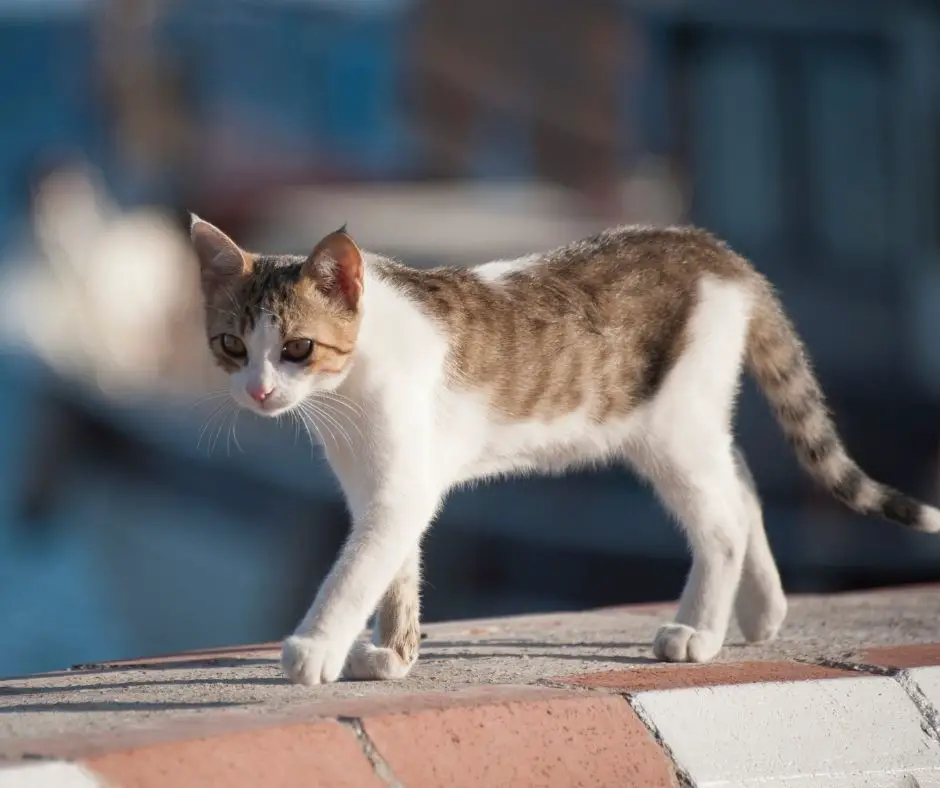Do Cats Have Full Control of Their Tails
Fluffy long and expressive. I know they can control their tails consciously but they are also an insight to a cats mood.

How Much Control Do Cats Have Over Their Tails Animals Hq
The Domestic cat is the only feline that can hold its tail in a vertical position while walking.

. Most cat owners know that our feline friends use their tails for a variety of different things. Cats use their tails to communicate. These vertebrae are protected by muscles that control the movements of the tail much in the same way that your legs are controlled by the thigh and calf muscles.
A cat who has an injury to their tail can have permanent damage. If your cat is being too protective of their tail maybe they have a problem. Cats tails can bend rotate and even curl on command.
As with most animals cats communicate mostly through body language. In delicate movements and challenging jumps a cats tail acts as a counterweight to its body when the cat moves left the tail will go right to balance it. The nerve endings gather all in one small area rather than being spread out throughout the entire tail.
Cats in the wild chase small prey on the ground as much as anything in the air. Sometimes the tail twitches and seems to have a life of its own. The nerve damage can heal over time but often it is permanent.
However when a cat really likes another cat another animal or a human being a show of affection is to wrap the tail around the friend. A cats tail is an extension of their spine and contains 10 of their bodys bones. And communication using the tail is very important.
The cats tail is an extension of the spine and helps the cat balance and communicate. Cat owners are starting to pay more attention to their cats bodily movements and many cat owners are curious as to whether cats can control their tails or if it is a reaction to certain. The nerves with in the tail affect the tail muscles and also help with urination and defecation control.
And if you dare to pet your cat on their tail or even worse give. Cats do have worries - primarily they are territorial and they also compete for food and mates. Its a sign of annoyance or anger.
However these dexterous appendages may seem stiff at times. Cats often walk along high narrow surfaces and the tail acts as a counterweight. A key function for a cats tail is to maintain balance.
The tail caudal vertebrae account for 10 of the bones in the cats body. I think that there is a component of subconscious behavior. Typically cat tails tend to have around 20 vertebrae although this can vary in either direction based on breed that extend outward from the spinal column towards the tip.
Cats protect their tails and so do not like others touching them. Cats can voluntary or involuntarily control their tail because a cats tail consists of a series of muscles ligaments tendons and nerves which give cats a full range of motion over their tail. Others have another goal in mind.
Although you should look at more than just their tail movements to fully understand your cats emotional state the tail may be the most expressive part of a cats body language. Cats swing their tails to always land on their feet which means either their brain knows to do it on its own or they have some control. When cats put their tail in the air around other cats it can be seen as an invite for the other cat to smell them.
That can make it seem like. When theyre annoyed they flick their tails to and fro and when they are happy they hold them up high. Some breeds of cat are known for their short tail or even complete absence of a tail.
The average number of bones in the tail is between 20 and 23. What you should do about it then its to notice if you think is abnormal. And they climb trees and use their tails to keep balance in ways we cannot imagine not having one.
When your cat looks or sways to the right the tail will move to the left. Excessive pulling on the tail can cause nerve damage which is one of the reasons why cats dont like their tails to be grabbed. Its effortless to them.
Cats move their tails instinctively. He controls it with voluntary muscles at the base of his tail. Wild cats hold their.
Depending on the breed your cat has 18 to 23 bones in his tail which is actually an extension of his spine. Most movements are voluntary but sometimes it can just do its own little thing. The tail also helps balance when the cat.
Take it as a compliment when a cat touches with its tail. Do Cats Have Control Over Their Tails. Cat tails are more complex than meets the eye.
These nerves are not fully protected and often close to the skin according to the International Cat. Cats born without tails are seriously handicapped. Again as mentioned above the cats tail is super sensitive.
If your cat frequently crouches with their tail curled tightly around their body for more than a few days then an evaluation by your veterinarian is warranted to rule out pain or illness. This means that if cats are being a little too aggressive or trying to hide their tail from you maybe theyre hurting. Cats move their tails to indicate their moods slow moving of the tail from side to side can indicate the cats annoyed over something mine do it when I wake them up from a nap for some snugs they really didnt want.
It comes so naturally to them because of the amazing feature that is their tail its a wondrous feat of engineering. The tail is a great indicator of your cats mood. But usually it is a movement they want to do.
Some cats are simply taking control of their twitching tail by standing on it with two paws. Although Manx and Cymric cats dont typically have long flowing tails the small hump where the tail should be is still highly sensitive. The tail nerves collect in a bundle together with those from his hind legs and rear before they collect into the spinal cord.

Do Cats Have Control Over Their Tails


No comments for "Do Cats Have Full Control of Their Tails"
Post a Comment